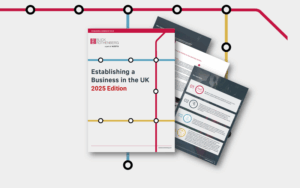General Election party manifestos ignore punitive tax rate anomalies
Systemic flaws cause high costs for households and UK economy
The General Election party manifestos ignore costly design flaws in the UK tax system
Robert Salter, Director said:
The effective, marginal tax rates, which can be much higher than the 45% additional rate of tax in the UK, mostly affects lower and or middle-income households – who due to the cost of living crisis are already struggling.
The UK tax system has a number of anomalies, which can result in people having tax rates of 55% or higher in some cases. For example, when Universal Credit recipients work extra hours, people claiming child benefit (or their partner) have an income over £60,000 and become liable to the child benefit clawback, or the write-down of the personal tax allowance which applies when someone earns over £100k per annum.
Whilst the Conservatives have proposed a ‘solution’ for child benefit clawback cases – which would result in child benefit clawback being assessed on the overall household income, rather than simply on the income of the higher-earning partner, the reality is that this proposal is very ‘messy’, difficult to introduce and sadly, the only case, where there is any suggested solution for any of these anomalies.
Given that the core parties (e.g. Labour / Conservative) appear to be promising that there won’t be any increase to the official top rate of income tax (45% or 47% with the NIC surcharge), it is disappointing that the systemic flaws which result in lower to medium-income households being caught by these traps have not been addressed.
The reality is that these design flaws lead to choices which are understandable on an individual level but are damaging to the UK economy as a whole – e.g. not accepting a promotion which makes you liable to the child benefit clawback or not working the extra hours that are available if you receive Universal Credit.
Election 24
For more election news and insights visit our Election Hub.
You may also be interested in

Ele Theochari has been appointed as Vice President of The Association of Taxation Technicians

Retailers Both Online and High Street Struggle Amid Rising Staffing Costs













